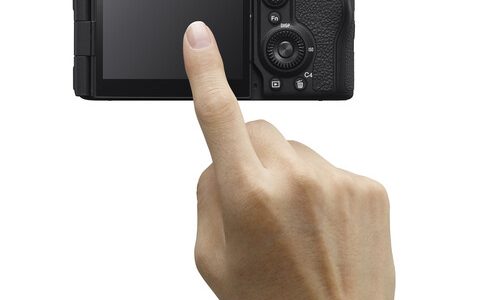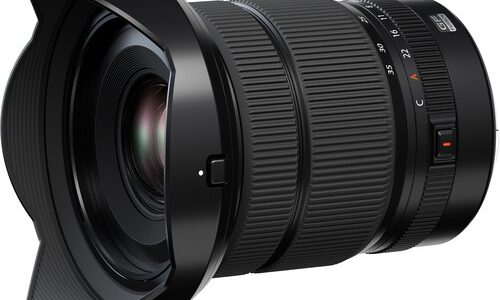

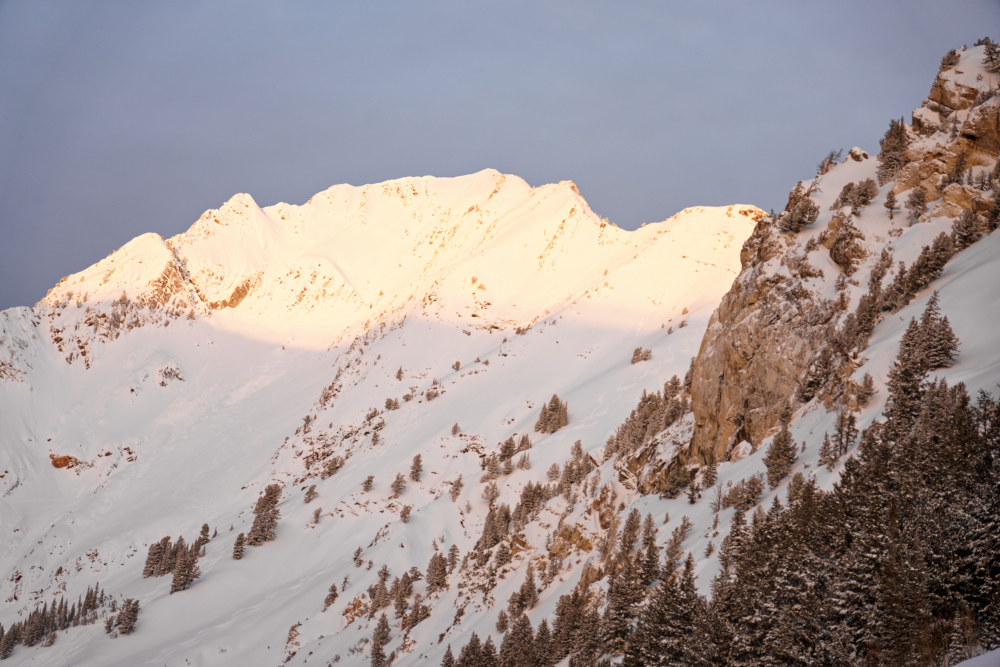
Shot with the A7r IV – Little Cottonwood Canyon, Utah.
Part 1- introduction and competitive landscape
For photographers looking for the ultimate in image quality in a reasonably affordable and portable camera, two names stand out right now – Nikon Z7 and Sony A7r mk IV. Either of these cameras will print beautifully as large as your printer will go – pairing with current-generation 44” printers from Canon, Epson and HP. Both will fill any display – including 8K monitors – with a glorious still image, although neither shoots 8K video. Both will handle the rigors of field use in difficult conditions. If you are looking for the ultimate all-around camera for most types of photography, your technique and lenses are up to the demands of these monsters, and you print big enough to need their image quality, these are the two names on the top of the list. If you want the best image quality you can afford and carry, one of these two cameras is likely to be your choice.
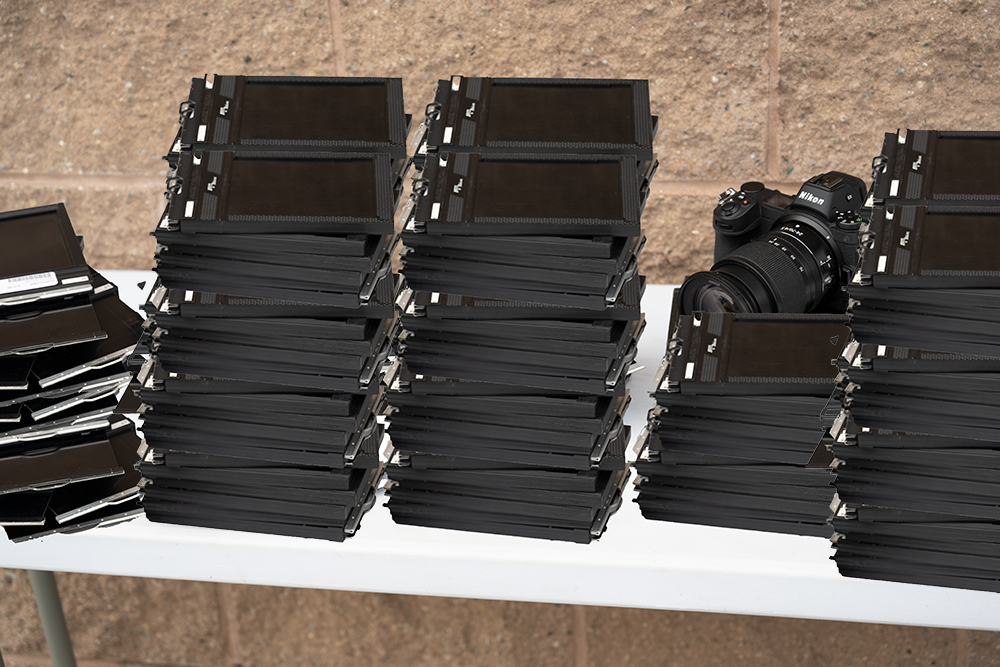
One caveat that all camera reviews should include, but few do: The Nikon Z7 reviewed here is my personal camera that I have owned for almost two years, and have over 8000 images on. I am extremely familiar with the Z7, and I have used Nikon gear going back to my first “real” camera, an N2000 I bought with savings from a paper route for a photography class in high school 30 years ago. I’ve owned nine Nikons since then, more than any other brand, and have almost certainly made 50,000 or more images on Nikon cameras. I used eight Nikkor lenses (a mixture of my own, loaners from Nikon USA and rentals) in this review, and have used countless others on different bodies over the years. The only other brand I have comparable experience with is Fujifilm – my other digital system. Since I taught photography for over a decade, I have handled and shot with just about everything on the market from old Olympus E-PL bodies to the GFX 100 – but Nikon and Fujifilm are what I have owned extensively, what the vast majority of the prints I have shown in the past decade are made with, and what I can pick up and use without reading the manual.
The Sony A7r IV was provided by Sony USA, through Lensrentals. I had it for about a month, made close to 1000 images with it (a mixture of test shots and “real” landscape images), and got to know it a bit – but I have nothing like the experience with Sony that I do with Nikon. I have used two other Sonys extensively – a NEX-7 and an original A7r, both years ago, and neither with lenses that really lived up to the bodies. I only had two lenses with the A7r IV, a 24-105mm f4 and a 12-24mm f4, both good lenses, and the 12-24 has a unique perspective as one of the widest rectilinear full-frame lenses in the world. I wish I had the best of Sony’s 50mm primes, to compare against my bitingly sharp 50mm f1.8 Z Nikkor in some test shots, and I wish I had a long lens for the Sony. I don’t know how 6 months with the Sony, and just picking it up on day-to-day shoots for a while, would change my experiences. I got to know it well enough to like it, but never well enough that it just fit in my hand like my Z7 does. Since no camera reviewer can have equal systems of Sony, Nikon, Canon, Fujifilm, Panasonic and Olympus gear at the same time, and have equal chance to use them all, the best we can do is to state what we know best…
The Z7 is a 45.7 MP camera, with a resolution of 8256×5504 pixels, while the A7r IV is a 60.2 megapixel camera, with a resolution of 9504×6336 pixels. At first glance, that seems like a substantial resolution advantage in Sony’s favor. Both cameras, however, have more resolution than any electronic display device you will find outside a NASA control room. Depending on who’s setting resolution standards, 8K displays are either (most commonly) 7680×4320 pixels (4 times the resolution of Full HD 1080p in each direction, for 16x the area, sometimes called Quad UHD) or 8192×4320, occasionally 8192×4608 or 8192×5120 (Cinema 8K). Even 8192×5120 still (slightly) crops a Z7 image, and crops an A7rIV image by a little more. For printing, the Sony has a 15% linear resolution advantage. If you’re comfortable making a 40×60” print on the Nikon (more in Part 2, but I am very comfortable with that print size, even for high-detail landscape photography on revealing platine or baryta paper), the Sony should make a 46×69” print.

There are three caveats to the ability of the Sony to print a little bit bigger. First of all, the Nikon has an extraordinary high-detail ISO 64 setting that is genuinely noiseless in the shadows. The Sony is a very good, but more conventional ISO 100 camera. How to trade off the Nikon’s little bit of extra shadow detail for the Sony’s extra resolution? Without looking very closely at prints around 40×60” from both cameras, it would be very hard to tell. I’ve never seen a print that big from the Sony except at PhotoPlus, and it is hard to make critical judgments at a show, where you don’t know how the images are processed. From prints at PhotoPlus, I can confidently say that the Sony prints big, and that it does so very well, but not how much better or worse than it is than the lower-resolution Nikon with a lower base ISO.
The second and third caveats are related, and have to do with the difficulty of making and displaying prints above 40×60”. Most importantly, the largest printer most of us will ever use is a 44” model – 60” printers are industrial machines that much more than double the cost of 44” printers. Only Canon even makes a 60” model that uses the full inkset of their latest 24” and 44” printers – both Epson and HP trade off color gamut at the largest size. 60” paper is much harder to come by, and options are much more limited, while 24” and 44” are where the great diversity of wonderful roll papers is found. Assuming that you want at least a 1” margin to handle big prints (you do, and the only exception is wrapped canvas), the practical maximum print size without specialized equipment is 42” wide. Mounting prints also becomes much trickier above 40×60” – archival matting and backing materials become harder to find. 40×60” is a standard oversize mat board, found in most large art supply stores and frame shops, while 48×72” or 48×96” are very oversize with limited choices, and you often run into truck freight shipping. Physically mounting the print becomes a challenge (where are you going to find a dry mount press that big, and tape mounting becomes much harder on heavy supersize prints). Canvas is a real option that eliminates a lot of display challenges when you get that big, but it doesn’t have the same resolving power as, say, Canson Infinity Platine. Both of these cameras will handle any canvas print you can make on a 44” printer with aplomb, and I suspect that even a 60” printer would be fine.
There are several competitors to the top-end Nikon and Sony bodies that are worth looking at, although nothing is as similar to them as they are to each other. The closest competitor is Sony’s own previous-generation A7r mk III and the second-closest is Nikon’s D850 DSLR. The A7r III gets you into almost the same range of image quality for $1400 less than an A7r IV and $1000 less than a Z7, although there are good deals on the Z7 with Nikon’s excellent 24-70mm f4 lens that bring the Z7 down into A7r III territory if you want a medium-speed standard zoom with the camera – the $1000 lens is available for $600 with the body.
Sony’s (also excellent) 24-105mm f4 is a $1400 lens, and their beautiful 24-70mm f2.8 is a $2200 lens. Both are substantially heavier than the little f4 Nikkor, as one would expect with their focal lengths and maximum apertures. Unfortunately, Sony’s smaller, lighter and less expensive standard zooms are both from the very earliest days of the FE mount, and are among Sony’s weaker offerings, nothing close to the 24-70mm f4 Nikkor, nor to the longer or faster Sony lenses. The A7r III body is less well sealed, and less comfortable to handle, than either the Nikon or the newer Sony – the reason it is still on the market is cost, and it can be a viable option for Sony fans who want a modern high-resolution body, and don’t need either the very highest resolution or a more rugged body. It’s an excellent performer for a bargain price if you have the right lenses.
The D850 brings the same image sensor found in the Z7 to a traditional Nikon DSLR body. For most photographers, I’d recommend the Z7 over the D850, but there are certainly cases where you might go the other way. The Z7 saves nearly 1/3 of the weight of the D850, and the real difference is more than that with some of the lenses. The Z-mount 24-70mm f2.8 is ¾ the weight of its F-mount equivalent, while the 24-70mm f4 Z lens, which is at least as sharp as the f2.8 DSLR lens, is half the weight of the faster DSLR optic. The 14-30mm f4 Z lens is less than half the weight of the 14-24mm f2.8 DSLR lens. The Z7 is a much more capable video camera than the D850, with usable video AF, image stabilization and the ability to output very high quality 10-bit log video to an external recorder. I haven’t pushed the Z7’s video capability terribly hard, but the little I’ve done has been excellent.
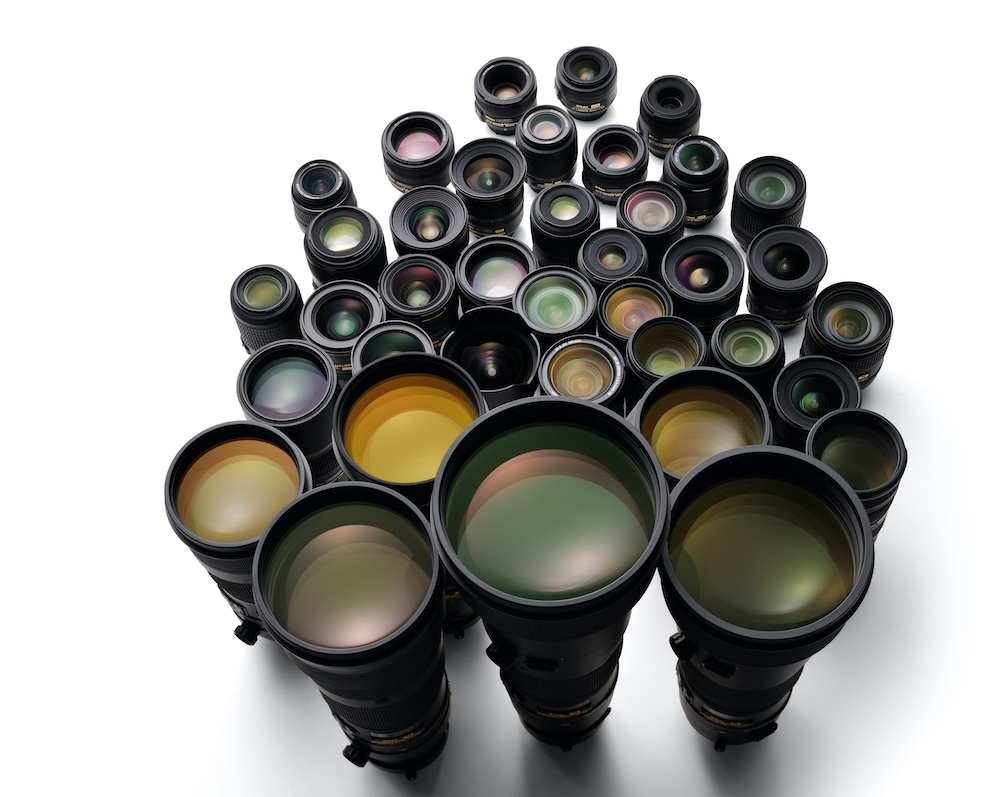
The Z lens line is small (8 lenses currently available, with another two hitting the market in the next few weeks), but Nikon has a secret weapon here. The tiny, inexpensive FTZ adapter allows most Nikon F-mount lenses to work on the Z7, and it adds image stabilization to unstabilized lenses, a very valuable trick the D850 can’t do. Unlike third-party adapters, the FTZ just works – adapting a Nikon lens to a Nikon body is an easy problem for Nikon, unlike a Metabones adapter that is trying to put a Canon lens on a Sony body (for example).
There are only two caveats about the FTZ – the most common one is that older screw-drive autofocus lenses become manual focus lenses on the Z7. Having a lot of screw-drive lenses, or one or two particularly valuable ones (an old exotic telephoto you don’t want to replace that is neither the current AF-S nor the intermediate AF-I type, for example) is one of the best reasons to look at the D850. The second caveat is that heavy lenses mounted on the FTZ should be carried by the lens, not the body. In the case of really big telephotos (anything from a 300mm f2.8 on up), that is standard practice in any case – you’re not going to carry a 600mm f4 around by picking up the D850 attached to the back of it. Lighter lenses are just fine to pick up by the body. There is a small, intermediate class of lenses in the 4-6 lb weight range (mostly very long consumer zooms like the Nikkor 200-500 f5.6 and its competitors from Sigma and Tamron) that demand extra care on the FTZ – just throw a Blackrapid strap on the lens.
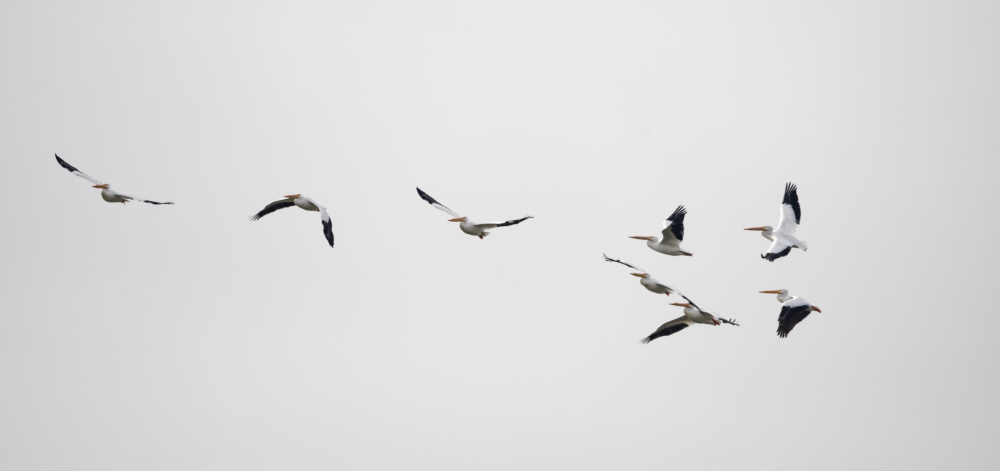
The other reason to look at the D850 is focusing. The Z7 is actually a more precise focuser than the D850 – every mirrorless camera focuses more precisely than any DSLR (unless the DSLR is in live-view mode, when it focuses just like a mirrorless camera) because mirrorless cameras focus directly on the sensor, while DSLRs use a separate AF sensor. Even with the latest firmware on the Z7, the D850 still focuses a bit faster and tracks focus a bit better. If you shoot sports and wildlife, mirrorless is still one generation behind the best DSLRs, and Nikon mirrorless is a bit behind Sony mirrorless. Most of us aren’t professional sports and wildlife photographers – and unless that’s what you do, access to the sharp, compact Z-mount lenses, coupled with the Z7’s increased focus precision, the better video, the future-proofing of going mirrorless and the “add VR” aspect of the FTZ is a bigger advantage than the focusing difference.
There are four additional competitors, three of which are more specialized than the A7r IV and the Z7. The third is the camera many of us have been waiting for – Canon’s EOS-R5. The first of the more specialized contenders is Panasonic’s S1R, a camera so rare that even B&H lists it as a special order item. For most photographers, it has several disadvantages, with no compelling advantage to offset them. It is significantly larger and heavier than not only the Sony and Nikon offerings, but every other mirrorless camera short of medium format and all but the largest DSLRs. The L-mount lenses it accepts tend (with a few exceptions) to be big and heavy as well. Some of the L-mount lenses available are very expensive Leica lenses, and others are Sigma lenses adapted from DSLR designs. Most of the Sigma lenses are essentially Sigma’s already substantial Art-series DSLR lenses with an FTZ adapter permanently attached, making them much larger than a comparable dedicated mirrorless lens, and even somewhat larger than a DSLR lens. Sigma has a few dedicated mirrorless lenses, and Panasonic themselves make a few more – but the selection of high-quality, dedicated mirrorless lenses is limited, and even many of those are big and heavy.
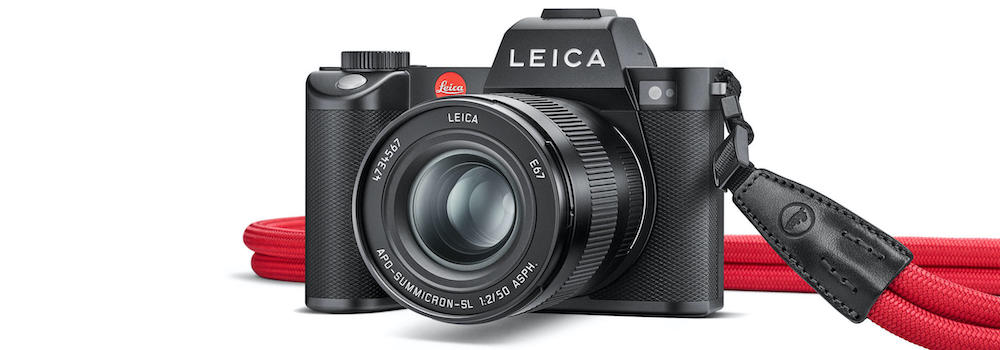
Both the S1R and the related Leica SL2 use a variation of contrast-detect autofocus alone, giving up the speed of phase-detect AF for extreme precision and no chance of AF-related banding. As a result, they are slower focusers than most mainstream full-frame cameras. L-mount in general seems to be experimental ground, with few if any truly mainstream choices. At least in part, this is a result of who’s supporting it – video-loving Panasonic, elite Leica and lensmaker Sigma. Sigma have generally made a few quirky bodies with oddball mounts. Their own SA-mount (a weird hybrid of Canon and Pentax standards just barely incompatible with both) never gained traction, and then they show up in the L-mount alliance not only with the expected lenses but with a tiny body with three tripod mounting points but no viewfinder!
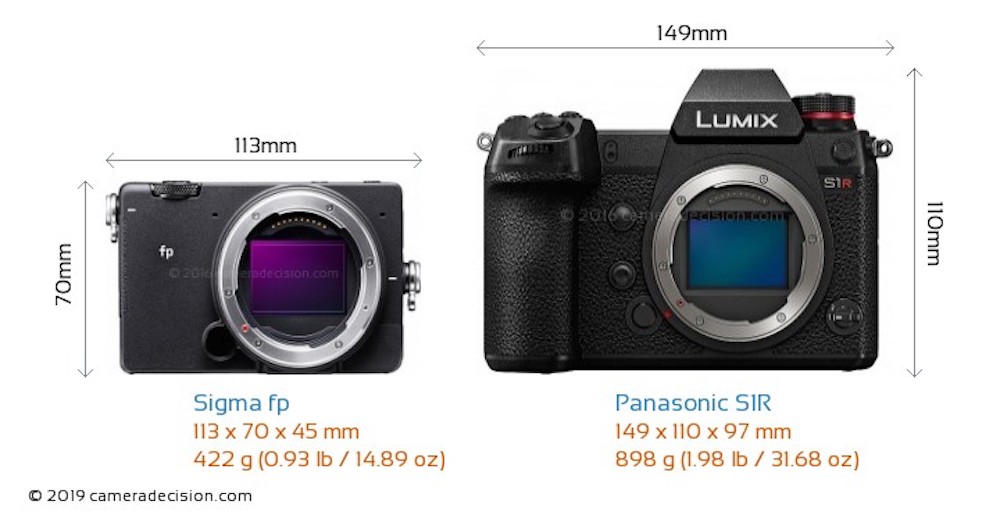
The other major drawback of L-mount is whether it will continue to be actively developed. Panasonic’s camera sales, divided between L-mount and Micro 4/3, are maybe 1/8 of Nikon’s, and an even smaller percentage of Sony’s. Leica and Sigma also make L-mount bodies, but neither one is a mainstream camera maker that is likely to continue the line in really active development on their own. The future of the L-mount (aside from, possibly, as a Leica curiosity) likely depends on Panasonic moving their still camera line into their successful video division. The S1H (a sibling model to the high-resolution S1R) is probably the most capable video camera in the mirrorless world, and their Micro 4/3 GH5 is also an important still/video hybrid.
The step above the two Panasonic hybrids is occupied by RED, the Sony F55, Cinema EOS, Blackmagic and the like – and Panasonic’s pro video division is an important player in that world. Panasonic could either choose to drop the still and hybrid camera business entirely, or they could give it to the pro video division (it’s oddly buried in consumer appliances right now). If they do give it to the pro video division, they then have to choose whether to keep the more stills-focused cameras, or to go on with just the two hybrids. It might be a sensible decision on Panasonic’s part to keep the stills-focused cameras, to offer real hybrid users a fuller system. Right now, none of Panasonic’s true (non-hybrid) pro video cameras are L-mount, but that’s an obvious direction to go if pro video picks up the L-mount line.
The S1R probably appeals to two groups of users – the most obvious is folks who shoot a lot of video, have or plan to buy S1H bodies (and/or the lower-end but highly capable S1), and want a high-resolution body as part of a system that was really chosen for its video chops. Panasonic is certainly a better choice than Nikon for a mostly video workflow, and it’s an interesting choice with Sony. Sony’s video-centric hybrid, the A7sII, is really old, and it’s arguable whether it’s actually a better video camera than many video-capable still cameras. It’s a close call against the Z7 or Sony’s own A7r IV, for example… Sony does have the well respected FS-line non-hybrid video cameras, which share E-mount lenses and some control philosophy with their still cameras. They are widely expected to update the A7sII soon, although little is known about what that camera might be like. The tiny, video-oriented Sigma fp adds further interest to the L-mount in a mostly video sense – it can get places no other equally capable video camera can.
The second group of users are those who love (and can afford) Leica SL-series cameras or lenses. Panasonics, including the S1R, provide another set of body options that integrate with the Leica cameras and lenses. Panasonic bodies with Leica lenses are one possible choice, as is a mixed system, although the body controls are very different. The little Sigma fp adds another intriguing choice to a multi-brand system of this type. For most of us, all Sony or all Nikon makes more sense, but if you have an original Leica SL and a couple of Leica lenses you love, an S1R body may be a high-resolution addition to the system.
For these Leicaphiles, Leica’s own SL2 is another, likely preferable, option. The two cameras are very closely related internally, but the Leica is packaged quite differently – in a beautiful all-metal chassis with a minimalist control scheme relying heavily on programable buttons and dials. The Panasonic, by contrast, has every imaginable control run out to a dedicated button. Specifications and performance are similar enough that the choice between them comes down to which control scheme you prefer. If you’re a video-oriented shooter with other Panasonic bodies, the Panasonic is probably your choice, while Leicaphiles will choose the SL2. They use the same sensor and extremely similar image processing – some reviewers find a very slight image quality difference in favor of the Leica, either due to microlenses and other sensor “toppings” or software improvements. The Leica also has software-based corrections for Leica M lenses used on an adapter, which the Panasonic lacks. Perhaps not surprisingly, the Leica is more expensive than the Panasonic or any other competitor other than medium format.
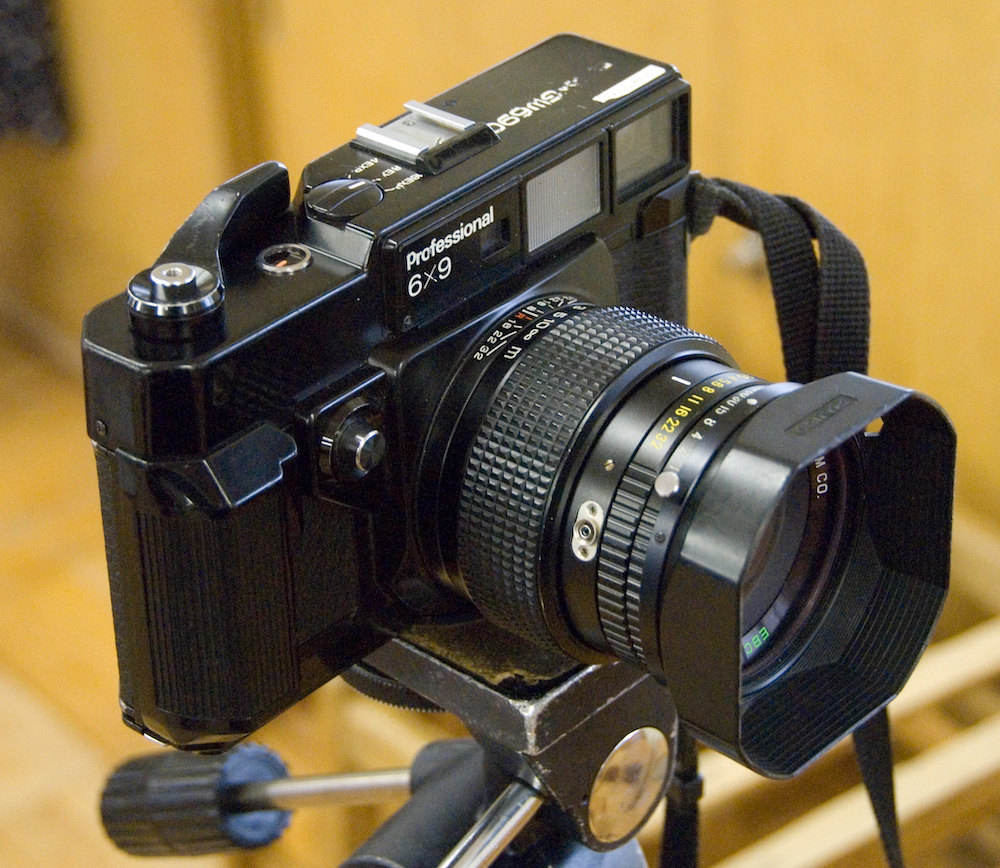
The second alternative to Sony and Nikon in the same quality and price range is medium format – which almost certainly means Fujifilm medium format. The sensors in vaguely affordable medium format cameras are not close to the size of a 645 film frame, let alone any of the larger medium format film frames ranging from 6×6 cm up to 6×17 cm – they are roughly 168% of the area of full frame, and 62% the area of 645 – right in between the two. It’s actually very close to the area of 127 “superslide” film (which wasn’t traditionally considered medium format), for those who love obscure film formats. Would anybody remember APS-C if it weren’t close to the area of most sub-full frame DSLR sensors? Maybe we need to rename these “small medium format” sensors after 127 superslide – they are certainly bigger than 24x36mm “full-frame”, but they’re not even near 645, which is traditionally the gateway to medium format? There are a few real medium format sensors (very close to 645 film) on the market, but they are found in Phase One and Hasselblad backs that sell for well over $20,000. Because of the difference in acuity between even high-resolution film and modern digital sensors, not only these superslide sensors, but high resolution 24x36mm sensors as well offer the resolution of large-format film. They’re actually beyond most 4×5 inch films, somewhere in the neighborhood of decent 5×7.
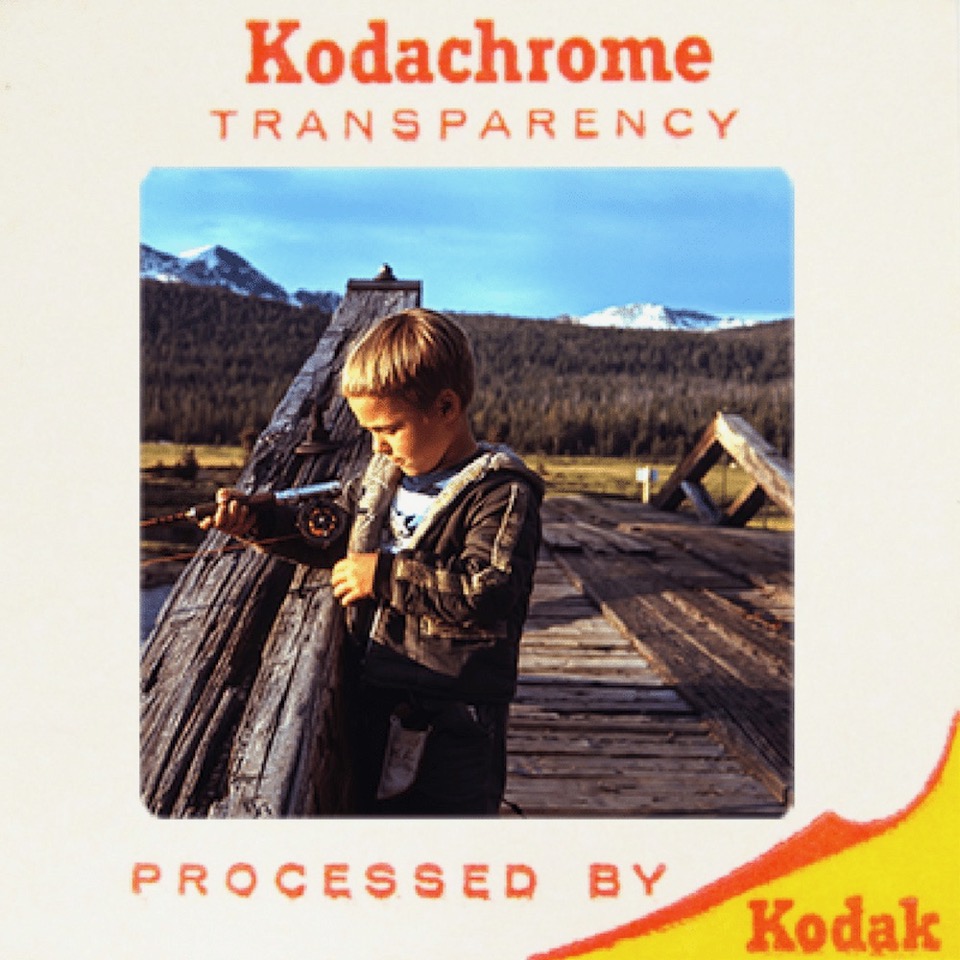
The GFX 50R body is somewhat more expensive than the A7r IV and Z7, but it currently has a $1000 discount that brings it to $3499 – close enough that it is very worthy of consideration. At this level, a $300-$700 difference in body cost probably shouldn’t be the deciding factor. The body is not much heavier than its full-frame competitors (approximately 100 grams/3.5 ounces). The lenses are both heavier and more expensive, and zooms, fast lenses and telephotos are far harder to find, if they exist at all. The longest GFX lens is 250mm, while Nikon has a full current line (using the FTZ adapter) up to 800mm, with older rarities up to a 1200-1700mm zoom and a 2000mm mirror lens. Sony has options reaching 600mm, although with slightly fewer choices than Nikon’s extensive lineup (notably: where’s that 300mm f2.8, Sony). Both Nikon and Sony offer zoom lenses ranging from compact travel zooms to full-on professional f2.8 lenses and from ultrawide to extreme telephoto, while Fujifilm has three big, heavy, modest-speed zooms in the midrange of focal length.
Image quality is very close to a wash, as the sensor size advantage of the Fujifilm is more or less neutralized by the newer technology and additional resolution of the Sony, and by the newer technology and lower base ISO of the Nikon. The GFX 50R is able to be relatively inexpensive because it uses an older sensor that doesn’t have the most recent imaging technologies – it makes up for it with its larger area. I have not used a GFX 50R myself, but in looking at large prints at PhotoPlus, overall image quality is very much in the same range as the Z7 and A7r IV. There is a “look” to medium format (which is reduced, but still present, in the superslide format), but much of it can be achieved by using fast, sharp lenses on full-frame sensors.
The huge image quality advantage to the 33x44mm superslide format is that there is another sensor above what the relatively inexpensive GFX 50R uses. The GFX 100 sensor really is different, with twice the resolution of the GFX 50R and the dynamic range of a truly modern sensor. Couple that with Fujifilm’s excellent color science (which is also found in the GFX 50R), and the combination provides simply the finest image quality I have seen – the only comparison is 8×10 inch film. So far, the superb 100 MP sensor is only available in the big, heavy, expensive GFX 100 body – but it will spread. Will we see the 100 MP sensor in less expensive bodies? I suspect so (in the next year or two), and if not, the other possibility is a really modern sensor in the 60-75 MP range, which should have image quality a significant step above the best of full-frame.
In choosing between full-frame and superslide formats, the real question is “what are you willing to give up”? The lens selection will always be better in full-frame, including fast primes and a wide range of zooms. Full-frame will always have a size and weight advantage, especially in the lenses. Full-frame will always mean faster frame rates and faster AF. On the other hand, as long as Sony (who is ultimately responsible for the sensors in all of these cameras and many others as well) continues to develop the two sensor formats in parallel, the best superslide sensors will always offer more resolution, less noise and better dynamic range than the best full-frame sensors.
Right now, there is another interesting decision point between Nikon, Sony and Fujifilm. The cameras handle very differently. The GFX 50R is a conscious tribute to the “Texas Leicas” Fujifilm used to make in the film era. Frame sizes ranged from 645 to 6×9 or even 6×17 cm (there is some argument as to whether the big panoramic cameras were true Texas Leicas). They were large, but relatively traditional rangefinders, with a shutter speed dial on the top, and focusing and aperture controls on lens rings (a few of the later 645 models were autofocus and had slightly different controls). While it’s not technically a rangefinder, having a perfectly standard electronic viewfinder, the GFX 50R really does handle like a Texas Leica. Turn off the autofocus, and be thankful for the (very) long roll of film in it, and you could forget that it’s a digital camera. It’ll shoot 3 frames per second, but it’s a shame to use it that way – keep it locked in single shot mode. It wants generic rangefinder muscle memory to find the controls – ideally either original Texas Leica or modern X-Pro/ XE variety Fujifilm APS-C. Actual Wetzlar Leica will do, too, as will Mamiya 6 or even Contax G series… The rangefinder body will appeal especially to street and portrait photographers, but don’t discount it for landscape, either.
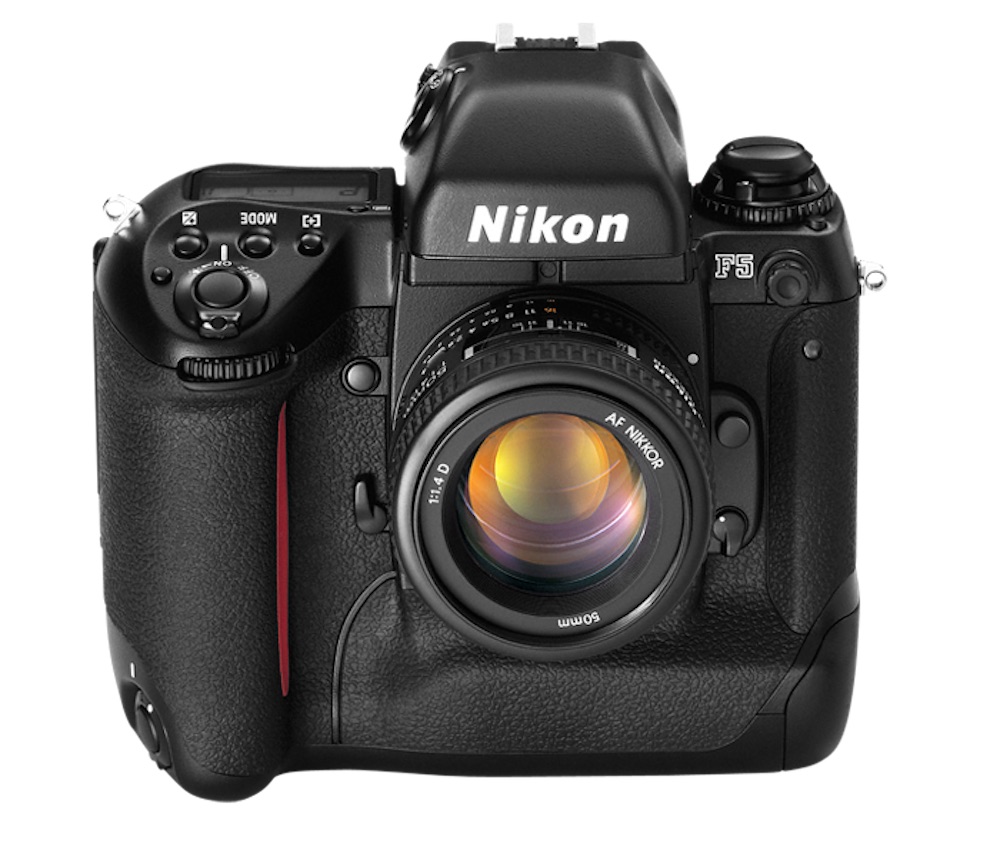
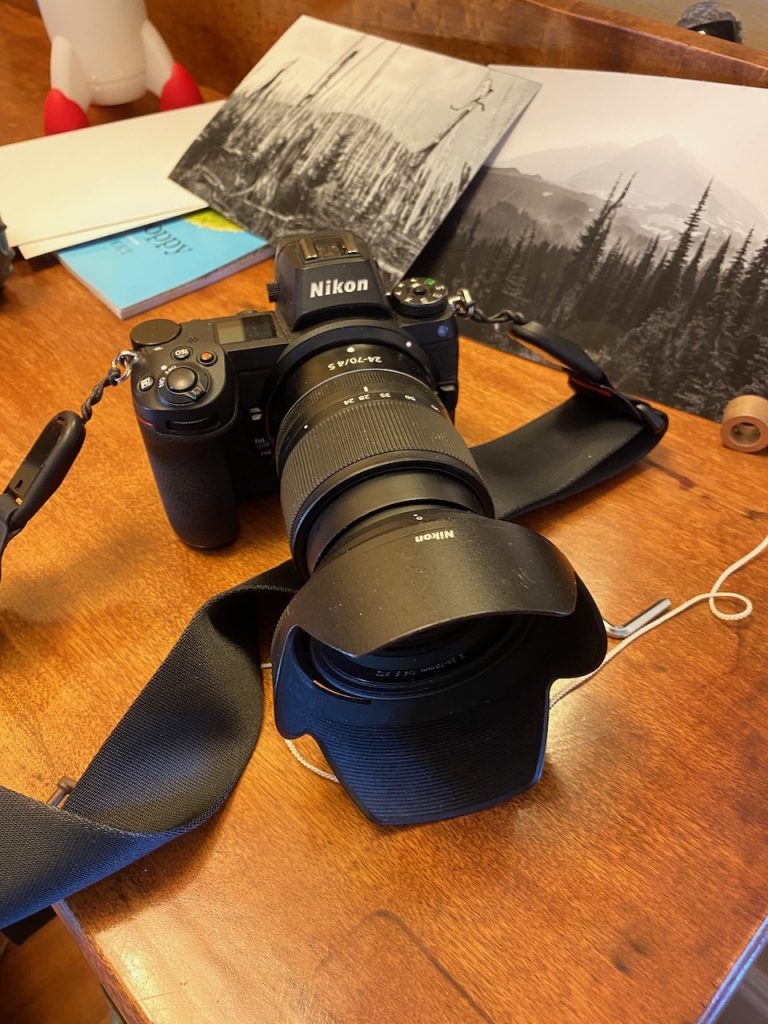
The Z7 is very much a part of “modern Nikon” design language, going back to Giorgetto Guigiaro’s design for the F5 in 1996. If you’ve used any upper-end Nikon from the F5 on, the two command dials, the ISO and exposure compensation buttons, and many other controls will fall right to hand. It looks like a Nikon, it feels like a Nikon and, most importantly, it is operable by muscle memory as a Nikon. If you speak Nikonese, the Z7 does too, and that’s a big advantage. It’s a very flexible camera – its excellent viewfinder with a huge range of display options will satisfy more contemplative photographers, while it’s fast and responsive enough for sports and wildlife. Its ruggedness and light weight beg for landscape expeditions (all the while wondering how Ansel Adams used to lug 8×10 inch film holders to the top of Half Dome!). Mine is joining me on hundreds of miles of the Pacific Crest Trail as soon as the trail opens.
The A7r IV is in the modern Sony full-frame design tradition that actually started with the fixed-lens RX1. The mode dial, exposure compensation, shutter speed dial and custom button (although later models add a second top-deck custom button) are all directly inherited from the RX1. The RX1 offered an accessory viewfinder that fit in the hot shoe – when the A7 and A7r came out, the permanent viewfinder was right there where a shoe-mounted viewfinder would be. At the time, mirrorless cameras had viewfinders in several different locations – rangefinder-style on the left edge, centered, but within the body, and in a pentaprism-style hump atop the body, where a shoe-mounted viewfinder would go. Since the RX1, the pentaprism-style finder has become the standard across most manufacturers, so it doesn’t seem to be a part of Sony’s design language – but it certainly was at the time. Aperture control has moved from a lens ring to a front wheel, although some lenses offer an aperture ring (in the classic RX1 location, but that’s widely shared among manufacturers). Modern Sonyish is not quite as fixed as Modern Nikonese – how many different locations has Sony used for the movie record button, for example? Still, if you know Sony full-frame cameras, the A7r IV will feel very familiar, and improved over its predecessors – most of the time, when Sony moves things, they improve them.
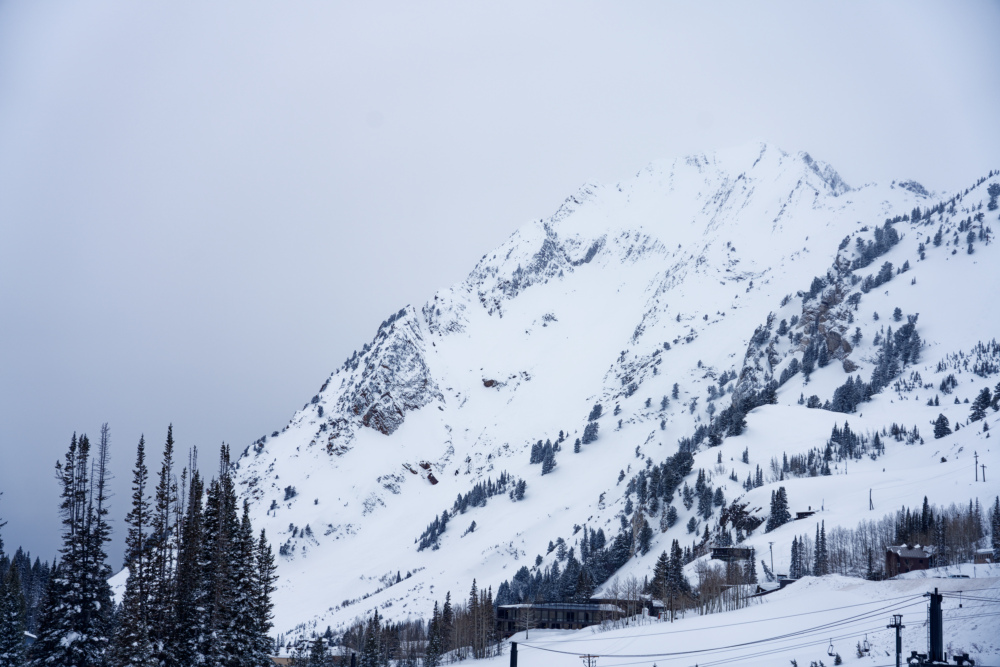
The third consideration apart from the two cameras reviewed here is “what will Canon do”? So far, Canon’s mirrorless body entries have been disappointing to serious photographers. Their APS-C EOS-M system has been mostly low-end bodies coupled with inexpensive f6.3 lenses – the few higher-end bodies have suffered from a lack of lenses. The full-frame EOS-R system has seen high-end lens introductions, but even the higher-end EOS-R body is decidedly midrange – a competitor to the Sony A7 III and Nikon Z6, not the A7r IV and the Z7. The EOS-R lacks any form of image stabilization, which every competitive body provides. Only some of the lenses, not including several of the most interesting, feature lens-based stabilization. The high-end lenses are expensive pairings with the midrange and low-end bodies, which can’t take advantage of their potential.
Canon has released partial specifications on their EOS-R5, a body which looks like it will be highly competitive with these two cameras. Like them, it has a high-resolution sensor (at least 45 MP, although the exact number hasn’t been released). Like the Nikon and Sony entries, it has in-body image stabilization. It will take advantage of the high-end Canon RF lenses that are already out there, and will provide a solid platform for future experiments in high-end lens design.
As of right now, the specifications are partial, nobody has hands-on experience with an EOS-R5, and we don’t even know exactly what it looks or feels like. The headline specification everybody’s talking about has to do with video, rather than stills. It will shoot 8k video at 30 frames per second and 4k at 120 fps, both in a raw video format! Until this release, those video specs have been the province of RED digital cinema cameras (and very little else). Video specs like that will open up real possibilities for artwork that uses motion in unusual ways, as well as for “conventional” narrative video. It is assumed to be a relatively standard Canon-feeling body, probably the size of a small DSLR, maybe the size of a Z7 or A7r IV, maybe a bit bigger.
The 8k video mode will probably require a sensor at least 8192 pixels across (most speculation is assuming “true 8k” at 8192 pixels, rather than Quad UHD at 7680 pixels, although I haven’t seen that absolutely confirmed). They say that it uses the full width of the sensor in 8k mode, which probably means that the sensor is very close to 8192 pixels across (if it were somewhere between 8192 and 8500 or so, it would be close enough to full-width that marketing could be excused for referring to it that way). That puts the still resolution right in Z7 territory (the Z7 sensor is 8256 pixels across) and almost certainly lower than A7r IV resolution. It could be a wider sensor using some form of oversampling, but that’s hardly worth it unless the sensor is somewhere in the 10,000-12,000 pixel width range (67-96 MP). If the still resolution were THAT high, Canon would almost certainly be boasting about it – so it’s nearly certain to be at or just above 8192 pixels, for a still resolution right in the neighborhood of 45 MP.
If it’s a ~45 MP sensor, what about other aspects of image quality? Canon’s previous attempt at a 50 MP sensor, found in the EOS 5Ds and 5Ds R DSLRs, was a decent sensor, but it had much weaker dynamic range than other high-resolution sensors. For many subjects, even the original Sony 36 MP sensor from the Nikon D800 and D800e, the original Sony A7r and the Pentax K1is superior to the Canon 50 MP sensor. Almost without exception, both second generation versions of the Sony sensor – the Nikon-modified 36 MP sensor that gets down to ISO 64 in the D810 and the 42.4 MP back-side illuminated version in the A7r II and A7r III are significantly better than the Canon sensor. The two third generation variants of the Sony design found in the D850, Z7 and A7r IV are beyond any contest from the EOS 5Ds sensor, which is still on its first generation.
Will the brand-new Canon sensor have weaker dynamic range like its predecessor, or will it be closer to the Sony-derived sensors? It seems like it has to be an extremely fast sensor, to keep up with its video specs. Canon color science has historically been among the best in the business – will the new camera keep that up? Beyond the sensor performance, what will other aspects of the camera’s performance be like? Canon’s Dual Pixel autofocus is generally excellent – will that remain true here? How will the body handle? Many Canons handle very well – but the original EOS-R was widely criticized for a clever touch strip that didn’t do as good a job as the dial it replaced.
I look forward to getting an EOS-R5 in to test here – how will the stills hold up to the current kings of the mirrorless hill? What will the very high-resolution video enable? I’m not a narrative filmmaker, although I plan to enlist the aid of a friend who is a very good one in testing this beast. I hope to do a shootout among some pretty special video cameras this summer or fall – the EOS R5, the Panasonic S1H, the Fujifilm X-T4 and maybe something from Blackmagic, the replacement for the venerable Sony A7s II, or even a RED. The goal will not be narrative film, but the fascinating art to be found on the edge between stills and motion – landscapes with blowing leaves, running rivers, rippling lakes or shifting dunes. Some will be slow-motion, some will be real-time, and some will be time-lapse.
In the second part of this article, we’ll look at the Nikon Z7 and Sony A7r IV in direct comparison. One of these two excellent cameras offers the highest image quality and best overall shooting experience available to most advanced photographers today. If your technique and your printer are up to it, as of early June, 2020, nothing short of a GFX 100 will beat the image quality of these two contenders – and one of the two is likely to be more practical than the big GFX.
Dan Wells
June 2020

Lorem ipsum dolor sit amet, consectetur adipiscing elit, sed do eiusmod tempor incididunt ut labore et dolore magna aliqua. Ut enim ad minim veniam, quis nostrud exercitation ullamco laboris nisi ut aliquip ex ea commodo consequat. Duis aute irure dolor in reprehenderit in voluptate velit esse cillum dolore eu fugiat nulla pariatur. Excepteur sint occaecat cupidatat non proident, sunt in culpa qui officia deserunt mollit anim id est laborum.
Lorem ipsum dolor sit amet, consectetur adipiscing elit, sed do eiusmod tempor incididunt ut labore et dolore magna aliqua. Ut enim ad minim veniam, quis nostrud exercitation ullamco laboris nisi ut aliquip ex ea commodo consequat. Duis aute irure dolor in reprehenderit in voluptate velit esse cillum dolore eu fugiat nulla pariatur. Excepteur sint occaecat cupidatat non proident, sunt in culpa qui officia deserunt mollit anim id est laborum.
Lorem ipsum dolor sit amet, consectetur adipiscing elit, sed do eiusmod tempor incididunt ut labore et dolore magna aliqua. Ut enim ad minim veniam, quis nostrud exercitation ullamco laboris nisi ut aliquip ex ea commodo consequat. Duis aute irure dolor in reprehenderit in voluptate velit esse cillum dolore eu fugiat nulla pariatur. Excepteur sint occaecat cupidatat non proident, sunt in culpa qui officia deserunt mollit anim id est laborum.

Lorem ipsum dolor sit amet, consectetur adipiscing elit, sed do eiusmod tempor incididunt ut labore et dolore magna aliqua. Ut enim ad minim veniam, quis nostrud exercitation ullamco laboris nisi ut aliquip ex ea commodo consequat. Duis aute irure dolor in reprehenderit in voluptate velit esse cillum dolore eu fugiat nulla pariatur. Excepteur sint occaecat cupidatat non proident, sunt in culpa qui officia deserunt mollit anim id est laborum.
Lorem ipsum dolor sit amet, consectetur adipiscing elit, sed do eiusmod tempor incididunt ut labore et dolore magna aliqua. Ut enim ad minim veniam, quis nostrud exercitation ullamco laboris nisi ut aliquip ex ea commodo consequat. Duis aute irure dolor in reprehenderit in voluptate velit esse cillum dolore eu fugiat nulla pariatur. Excepteur sint occaecat cupidatat non proident, sunt in culpa qui officia deserunt mollit anim id est laborum.
Lorem ipsum dolor sit amet, consectetur adipiscing elit, sed do eiusmod tempor incididunt ut labore et dolore magna aliqua. Ut enim ad minim veniam, quis nostrud exercitation ullamco laboris nisi ut aliquip ex ea commodo consequat. Duis aute irure dolor in reprehenderit in voluptate velit esse cillum dolore eu fugiat nulla pariatur. Excepteur sint occaecat cupidatat non proident, sunt in culpa qui officia deserunt mollit anim id est laborum.

Lorem ipsum dolor sit amet, consectetur adipiscing elit, sed do eiusmod tempor incididunt ut labore et dolore magna aliqua. Ut enim ad minim veniam, quis nostrud exercitation ullamco laboris nisi ut aliquip ex ea commodo consequat. Duis aute irure dolor in reprehenderit in voluptate velit esse cillum dolore eu fugiat nulla pariatur. Excepteur sint occaecat cupidatat non proident, sunt in culpa qui officia deserunt mollit anim id est laborum.
Lorem ipsum dolor sit amet, consectetur adipiscing elit, sed do eiusmod tempor incididunt ut labore et dolore magna aliqua. Ut enim ad minim veniam, quis nostrud exercitation ullamco laboris nisi ut aliquip ex ea commodo consequat. Duis aute irure dolor in reprehenderit in voluptate velit esse cillum dolore eu fugiat nulla pariatur. Excepteur sint occaecat cupidatat non proident, sunt in culpa qui officia deserunt mollit anim id est laborum.
Lorem ipsum dolor sit amet, consectetur adipiscing elit, sed do eiusmod tempor incididunt ut labore et dolore magna aliqua. Ut enim ad minim veniam, quis nostrud exercitation ullamco laboris nisi ut aliquip ex ea commodo consequat. Duis aute irure dolor in reprehenderit in voluptate velit esse cillum dolore eu fugiat nulla pariatur. Excepteur sint occaecat cupidatat non proident, sunt in culpa qui officia deserunt mollit anim id est laborum.

Lorem ipsum dolor sit amet, consectetur adipiscing elit, sed do eiusmod tempor incididunt ut labore et dolore magna aliqua. Ut enim ad minim veniam, quis nostrud exercitation ullamco laboris nisi ut aliquip ex ea commodo consequat. Duis aute irure dolor in reprehenderit in voluptate velit esse cillum dolore eu fugiat nulla pariatur. Excepteur sint occaecat cupidatat non proident, sunt in culpa qui officia deserunt mollit anim id est laborum.
Lorem ipsum dolor sit amet, consectetur adipiscing elit, sed do eiusmod tempor incididunt ut labore et dolore magna aliqua. Ut enim ad minim veniam, quis nostrud exercitation ullamco laboris nisi ut aliquip ex ea commodo consequat. Duis aute irure dolor in reprehenderit in voluptate velit esse cillum dolore eu fugiat nulla pariatur. Excepteur sint occaecat cupidatat non proident, sunt in culpa qui officia deserunt mollit anim id est laborum.

Lorem ipsum dolor sit amet, consectetur adipiscing elit, sed do eiusmod tempor incididunt ut labore et dolore magna aliqua. Ut enim ad minim veniam, quis nostrud exercitation ullamco laboris nisi ut aliquip ex ea commodo consequat. Duis aute irure dolor in reprehenderit in voluptate velit esse cillum dolore eu fugiat nulla pariatur. Excepteur sint occaecat cupidatat non proident, sunt in culpa qui officia deserunt mollit anim id est laborum.
Lorem ipsum dolor sit amet, consectetur adipiscing elit, sed do eiusmod tempor incididunt ut labore et dolore magna aliqua. Ut enim ad minim veniam, quis nostrud exercitation ullamco laboris nisi ut aliquip ex ea commodo consequat. Duis aute irure dolor in reprehenderit in voluptate velit esse cillum dolore eu fugiat nulla pariatur. Excepteur sint occaecat cupidatat non proident, sunt in culpa qui officia deserunt mollit anim id est laborum.
Lorem ipsum dolor sit amet, consectetur adipiscing elit, sed do eiusmod tempor incididunt ut labore et dolore magna aliqua. Ut enim ad minim veniam, quis nostrud exercitation ullamco laboris nisi ut aliquip ex ea commodo consequat. Duis aute irure dolor in reprehenderit in voluptate velit esse cillum dolore eu fugiat nulla pariatur. Excepteur sint occaecat cupidatat non proident, sunt in culpa qui officia deserunt mollit anim id est laborum.
Lorem ipsum dolor sit amet, consectetur adipiscing elit, sed do eiusmod tempor incididunt ut labore et dolore magna aliqua. Ut enim ad minim veniam, quis nostrud exercitation ullamco laboris nisi ut aliquip ex ea commodo consequat. Duis aute irure dolor in reprehenderit in voluptate velit esse cillum dolore eu fugiat nulla pariatur. Excepteur sint occaecat cupidatat non proident, sunt in culpa qui officia deserunt mollit anim id est laborum.

Lorem ipsum dolor sit amet, consectetur adipiscing elit, sed do eiusmod tempor incididunt ut labore et dolore magna aliqua. Ut enim ad minim veniam, quis nostrud exercitation ullamco laboris nisi ut aliquip ex ea commodo consequat. Duis aute irure dolor in reprehenderit in voluptate velit esse cillum dolore eu fugiat nulla pariatur. Excepteur sint occaecat cupidatat non proident, sunt in culpa qui officia deserunt mollit anim id est laborum.
Lorem ipsum dolor sit amet, consectetur adipiscing elit, sed do eiusmod tempor incididunt ut labore et dolore magna aliqua. Ut enim ad minim veniam, quis nostrud exercitation ullamco laboris nisi ut aliquip ex ea commodo consequat. Duis aute irure dolor in reprehenderit in voluptate velit esse cillum dolore eu fugiat nulla pariatur. Excepteur sint occaecat cupidatat non proident, sunt in culpa qui officia deserunt mollit anim id est laborum.
Lorem ipsum dolor sit amet, consectetur adipiscing elit, sed do eiusmod tempor incididunt ut labore et dolore magna aliqua. Ut enim ad minim veniam, quis nostrud exercitation ullamco laboris nisi ut aliquip ex ea commodo consequat. Duis aute irure dolor in reprehenderit in voluptate velit esse cillum dolore eu fugiat nulla pariatur. Excepteur sint occaecat cupidatat non proident, sunt in culpa qui officia deserunt mollit anim id est laborum.
Lorem ipsum dolor sit amet, consectetur adipiscing elit, sed do eiusmod tempor incididunt ut labore et dolore magna aliqua. Ut enim ad minim veniam, quis nostrud exercitation ullamco laboris nisi ut aliquip ex ea commodo consequat. Duis aute irure dolor in reprehenderit in voluptate velit esse cillum dolore eu fugiat nulla pariatur. Excepteur sint occaecat cupidatat non proident, sunt in culpa qui officia deserunt mollit anim id est laborum.

Lorem ipsum dolor sit amet, consectetur adipiscing elit, sed do eiusmod tempor incididunt ut labore et dolore magna aliqua. Ut enim ad minim veniam, quis nostrud exercitation ullamco laboris nisi ut aliquip ex ea commodo consequat. Duis aute irure dolor in reprehenderit in voluptate velit esse cillum dolore eu fugiat nulla pariatur. Excepteur sint occaecat cupidatat non proident, sunt in culpa qui officia deserunt mollit anim id est laborum.
Lorem ipsum dolor sit amet, consectetur adipiscing elit, sed do eiusmod tempor incididunt ut labore et dolore magna aliqua. Ut enim ad minim veniam, quis nostrud exercitation ullamco laboris nisi ut aliquip ex ea commodo consequat. Duis aute irure dolor in reprehenderit in voluptate velit esse cillum dolore eu fugiat nulla pariatur. Excepteur sint occaecat cupidatat non proident, sunt in culpa qui officia deserunt mollit anim id est laborum.
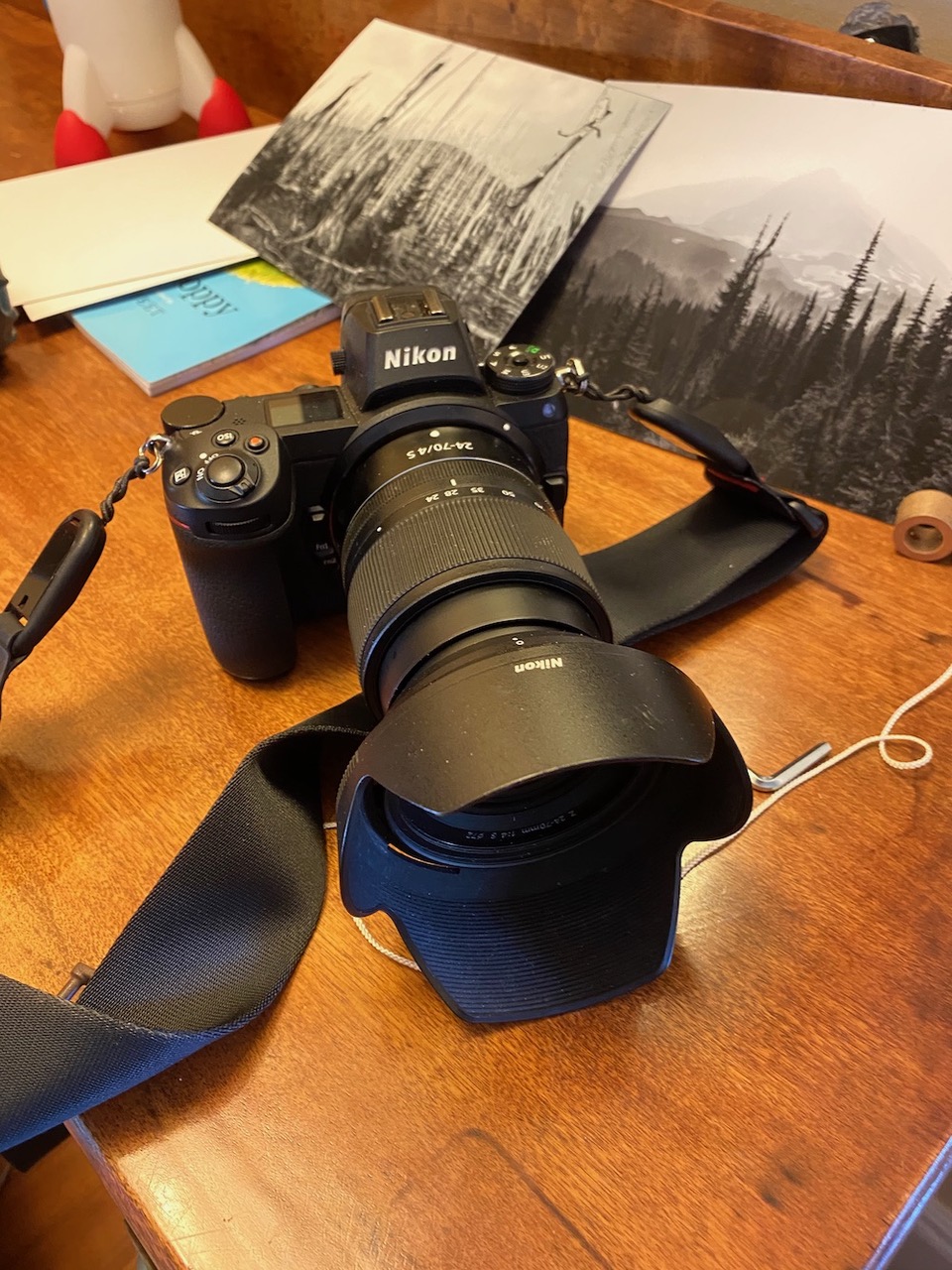
Lorem ipsum dolor sit amet, consectetur adipiscing elit, sed do eiusmod tempor incididunt ut labore et dolore magna aliqua. Ut enim ad minim veniam, quis nostrud exercitation ullamco laboris nisi ut aliquip ex ea commodo consequat. Duis aute irure dolor in reprehenderit in voluptate velit esse cillum dolore eu fugiat nulla pariatur. Excepteur sint occaecat cupidatat non proident, sunt in culpa qui officia deserunt mollit anim id est laborum.
Lorem ipsum dolor sit amet, consectetur adipiscing elit, sed do eiusmod tempor incididunt ut labore et dolore magna aliqua. Ut enim ad minim veniam, quis nostrud exercitation ullamco laboris nisi ut aliquip ex ea commodo consequat. Duis aute irure dolor in reprehenderit in voluptate velit esse cillum dolore eu fugiat nulla pariatur. Excepteur sint occaecat cupidatat non proident, sunt in culpa qui officia deserunt mollit anim id est laborum.
Lorem ipsum dolor sit amet, consectetur adipiscing elit, sed do eiusmod tempor incididunt ut labore et dolore magna aliqua. Ut enim ad minim veniam, quis nostrud exercitation ullamco laboris nisi ut aliquip ex ea commodo consequat. Duis aute irure dolor in reprehenderit in voluptate velit esse cillum dolore eu fugiat nulla pariatur. Excepteur sint occaecat cupidatat non proident, sunt in culpa qui officia deserunt mollit anim id est laborum.

Lorem ipsum dolor sit amet, consectetur adipiscing elit, sed do eiusmod tempor incididunt ut labore et dolore magna aliqua. Ut enim ad minim veniam, quis nostrud exercitation ullamco laboris nisi ut aliquip ex ea commodo consequat. Duis aute irure dolor in reprehenderit in voluptate velit esse cillum dolore eu fugiat nulla pariatur. Excepteur sint occaecat cupidatat non proident, sunt in culpa qui officia deserunt mollit anim id est laborum.
Lorem ipsum dolor sit amet, consectetur adipiscing elit, sed do eiusmod tempor incididunt ut labore et dolore magna aliqua. Ut enim ad minim veniam, quis nostrud exercitation ullamco laboris nisi ut aliquip ex ea commodo consequat. Duis aute irure dolor in reprehenderit in voluptate velit esse cillum dolore eu fugiat nulla pariatur. Excepteur sint occaecat cupidatat non proident, sunt in culpa qui officia deserunt mollit anim id est laborum.
Lorem ipsum dolor sit amet, consectetur adipiscing elit, sed do eiusmod tempor incididunt ut labore et dolore magna aliqua. Ut enim ad minim veniam, quis nostrud exercitation ullamco laboris nisi ut aliquip ex ea commodo consequat. Duis aute irure dolor in reprehenderit in voluptate velit esse cillum dolore eu fugiat nulla pariatur. Excepteur sint occaecat cupidatat non proident, sunt in culpa qui officia deserunt mollit anim id est laborum.

Lorem ipsum dolor sit amet, consectetur adipiscing elit, sed do eiusmod tempor incididunt ut labore et dolore magna aliqua. Ut enim ad minim veniam, quis nostrud exercitation ullamco laboris nisi ut aliquip ex ea commodo consequat. Duis aute irure dolor in reprehenderit in voluptate velit esse cillum dolore eu fugiat nulla pariatur. Excepteur sint occaecat cupidatat non proident, sunt in culpa qui officia deserunt mollit anim id est laborum.
Lorem ipsum dolor sit amet, consectetur adipiscing elit, sed do eiusmod tempor incididunt ut labore et dolore magna aliqua. Ut enim ad minim veniam, quis nostrud exercitation ullamco laboris nisi ut aliquip ex ea commodo consequat. Duis aute irure dolor in reprehenderit in voluptate velit esse cillum dolore eu fugiat nulla pariatur. Excepteur sint occaecat cupidatat non proident, sunt in culpa qui officia deserunt mollit anim id est laborum.

Lorem ipsum dolor sit amet, consectetur adipiscing elit, sed do eiusmod tempor incididunt ut labore et dolore magna aliqua. Ut enim ad minim veniam, quis nostrud exercitation ullamco laboris nisi ut aliquip ex ea commodo consequat. Duis aute irure dolor in reprehenderit in voluptate velit esse cillum dolore eu fugiat nulla pariatur. Excepteur sint occaecat cupidatat non proident, sunt in culpa qui officia deserunt mollit anim id est laborum.
Lorem ipsum dolor sit amet, consectetur adipiscing elit, sed do eiusmod tempor incididunt ut labore et dolore magna aliqua. Ut enim ad minim veniam, quis nostrud exercitation ullamco laboris nisi ut aliquip ex ea commodo consequat. Duis aute irure dolor in reprehenderit in voluptate velit esse cillum dolore eu fugiat nulla pariatur. Excepteur sint occaecat cupidatat non proident, sunt in culpa qui officia deserunt mollit anim id est laborum.
Lorem ipsum dolor sit amet, consectetur adipiscing elit, sed do eiusmod tempor incididunt ut labore et dolore magna aliqua. Ut enim ad minim veniam, quis nostrud exercitation ullamco laboris nisi ut aliquip ex ea commodo consequat. Duis aute irure dolor in reprehenderit in voluptate velit esse cillum dolore eu fugiat nulla pariatur. Excepteur sint occaecat cupidatat non proident, sunt in culpa qui officia deserunt mollit anim id est laborum.

Lorem ipsum dolor sit amet, consectetur adipiscing elit, sed do eiusmod tempor incididunt ut labore et dolore magna aliqua. Ut enim ad minim veniam, quis nostrud exercitation ullamco laboris nisi ut aliquip ex ea commodo consequat. Duis aute irure dolor in reprehenderit in voluptate velit esse cillum dolore eu fugiat nulla pariatur. Excepteur sint occaecat cupidatat non proident, sunt in culpa qui officia deserunt mollit anim id est laborum.
Lorem ipsum dolor sit amet, consectetur adipiscing elit, sed do eiusmod tempor incididunt ut labore et dolore magna aliqua. Ut enim ad minim veniam, quis nostrud exercitation ullamco laboris nisi ut aliquip ex ea commodo consequat. Duis aute irure dolor in reprehenderit in voluptate velit esse cillum dolore eu fugiat nulla pariatur. Excepteur sint occaecat cupidatat non proident, sunt in culpa qui officia deserunt mollit anim id est laborum.
Lorem ipsum dolor sit amet, consectetur adipiscing elit, sed do eiusmod tempor incididunt ut labore et dolore magna aliqua. Ut enim ad minim veniam, quis nostrud exercitation ullamco laboris nisi ut aliquip ex ea commodo consequat. Duis aute irure dolor in reprehenderit in voluptate velit esse cillum dolore eu fugiat nulla pariatur. Excepteur sint occaecat cupidatat non proident, sunt in culpa qui officia deserunt mollit anim id est laborum.
You May Also Enjoy...
Hand’s On: new Sony A9III and Sony 50mm G Master, Sony 85mm G Master, Sony 75-350mm APS lenses
A quick hands on look at Sony A9iii and the Sony APS 75-350mm len
The best wide-angle zoom in the world? The Fujinon G5 20-35mm f4 R WR reviewed.
FUJIFILM GF 20-35mm f/4 R WR L
